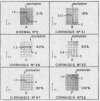Abstract
Direct measurements of portal flow and pressure in a relatively large number of patients with cirrhosis show a marked reduction in flow associated with a nearly constant plateau of portal pressure. This lack of correlation indicates the complex relationships of resistances in the splanchnic, collateral, and hepatic circuits determining the division of the available splanchnic flow between the portal vein and the collateral pathways. Subtracting the measured portal flow from well-established estimates of total hepatic blood flow in cirrhosis suggests that the hepatic artery contributes more than one-half of the blood perfusing the cirrhotic liver. There was no instance of retrograde portal flow during the preshunt measurements, although such reversal was frequent after side-to-side portacaval anastomosis. Attempting to explain the plateau of portal pressure in the face of an increasing outflow resistance presumably associated with progress of the disease, we postulate that an augmented inflow resistance to the splanchnic chamber reduces splanchnic flow in cirrhosis. End-to-side portacaval anastomosis did not return normal portal flow, although it decreased pressure to accepted control levels. The assumption is that most of the splanchnic blood was flowing through the shunt, leading to a high splanchnic resistance in the immediate postshunt status. If this resistance was previously elevated, as suggested by the plateau of portal pressure, the mechanism responsible for the elevation was not immediately deactivated after the shunt, and the true effect of the operation upon splanchnic flow may not be measurable at such time.
Respiratory oscillations were a significant component of portal flow in cirrhosis before and after portacaval anastomosis, indicating the limitations of any steady state analysis of the circulatory derangement in cirrhosis.
Full text
PDF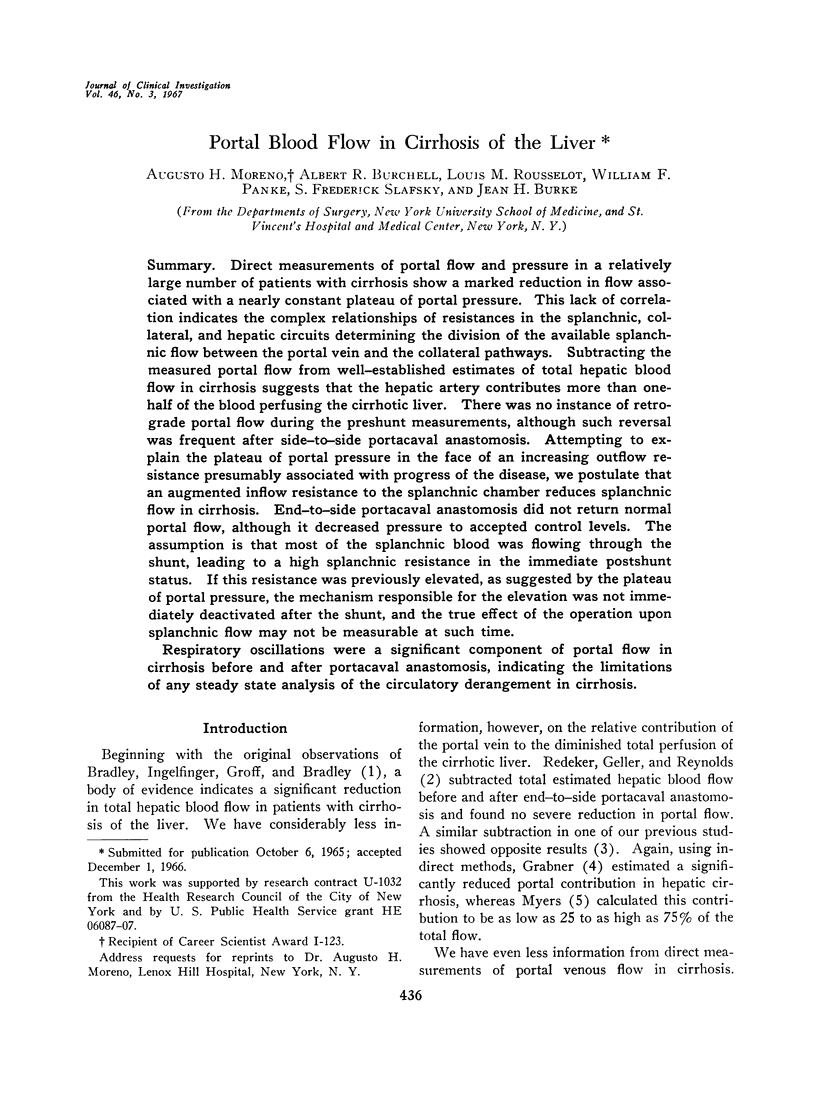
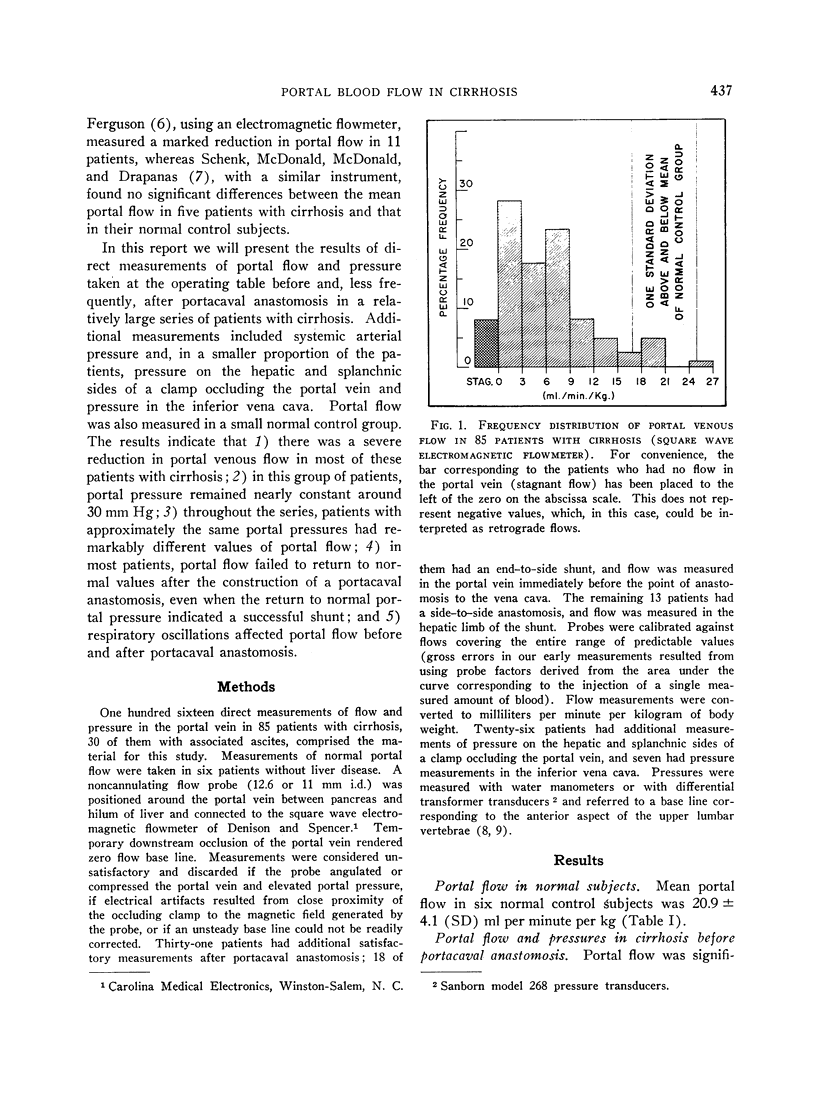
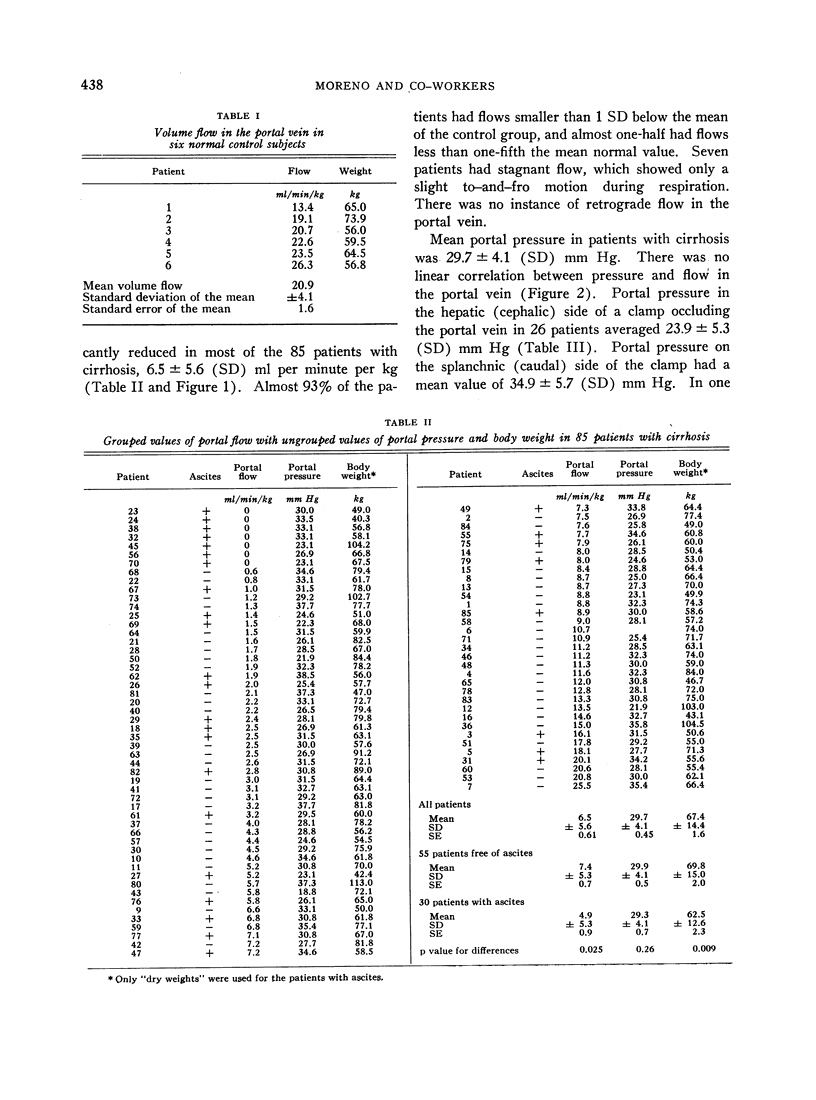
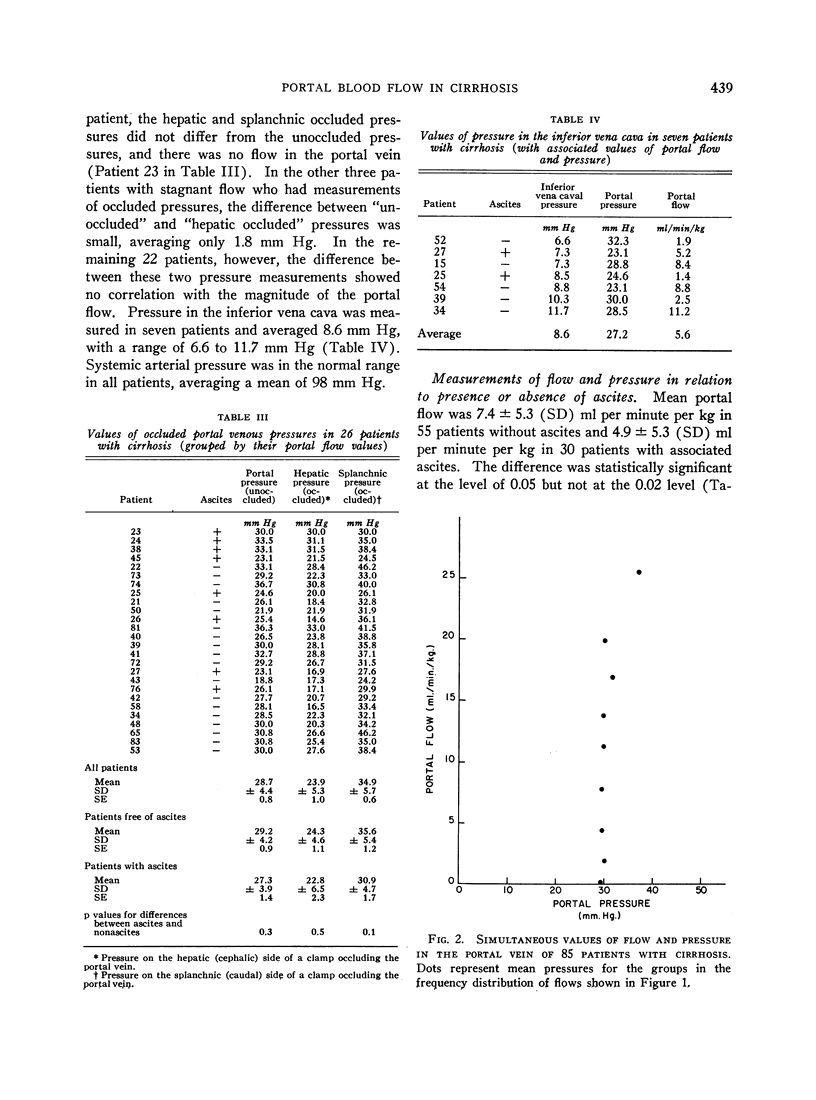
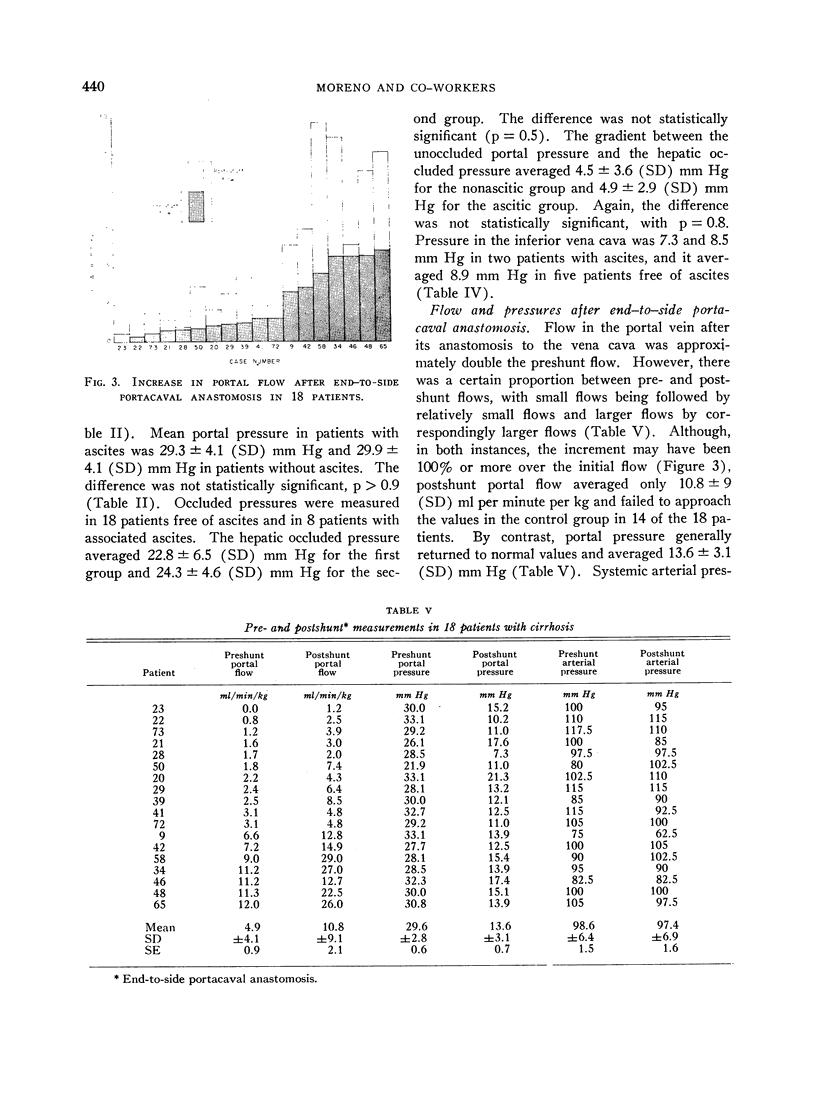
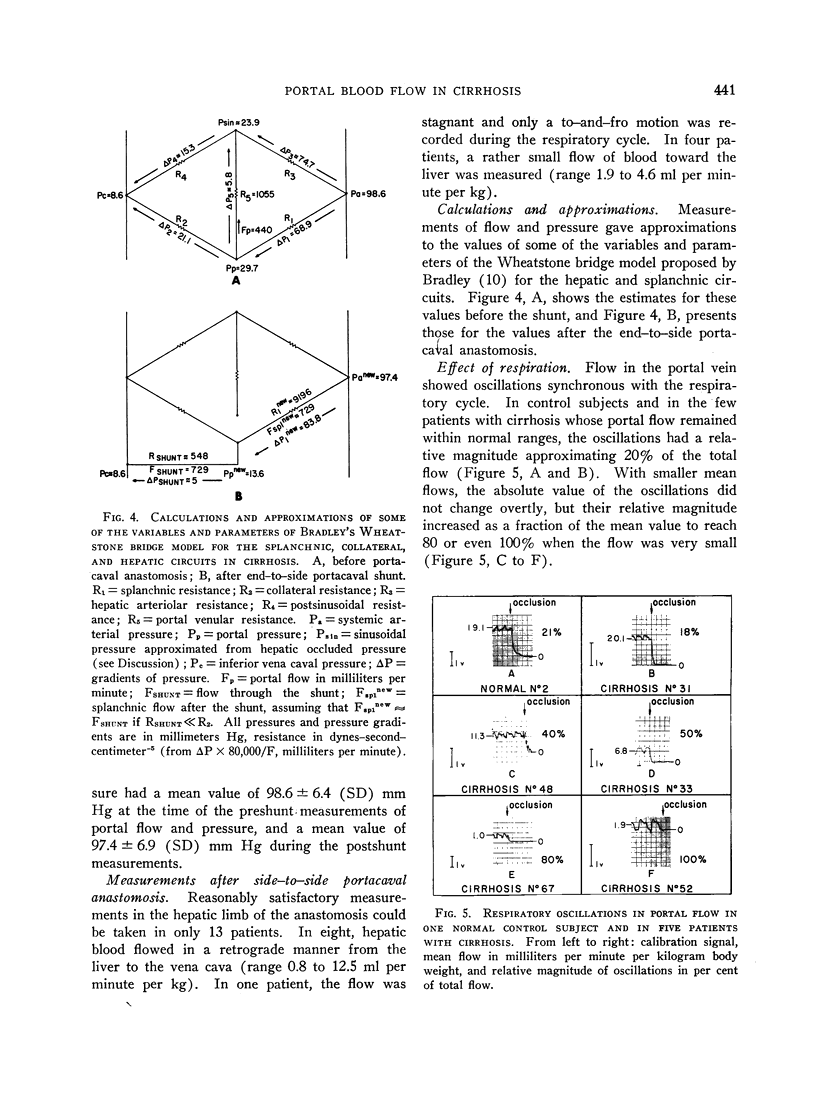
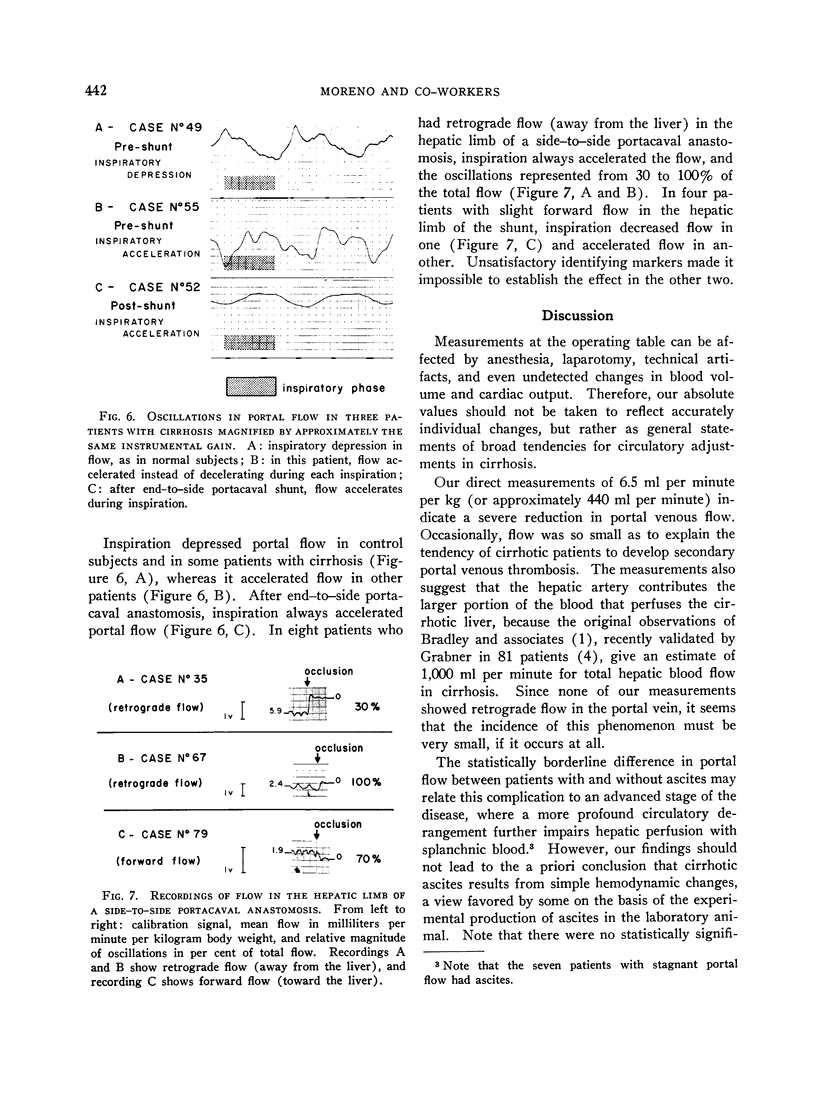
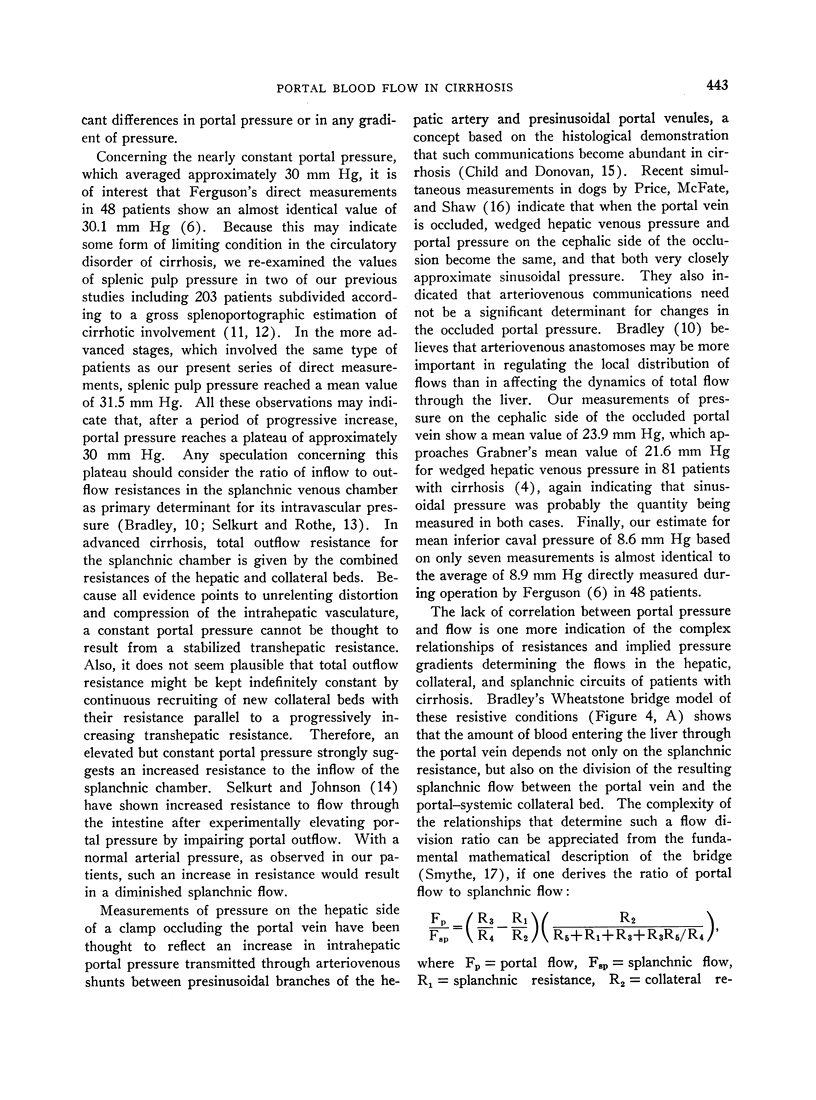
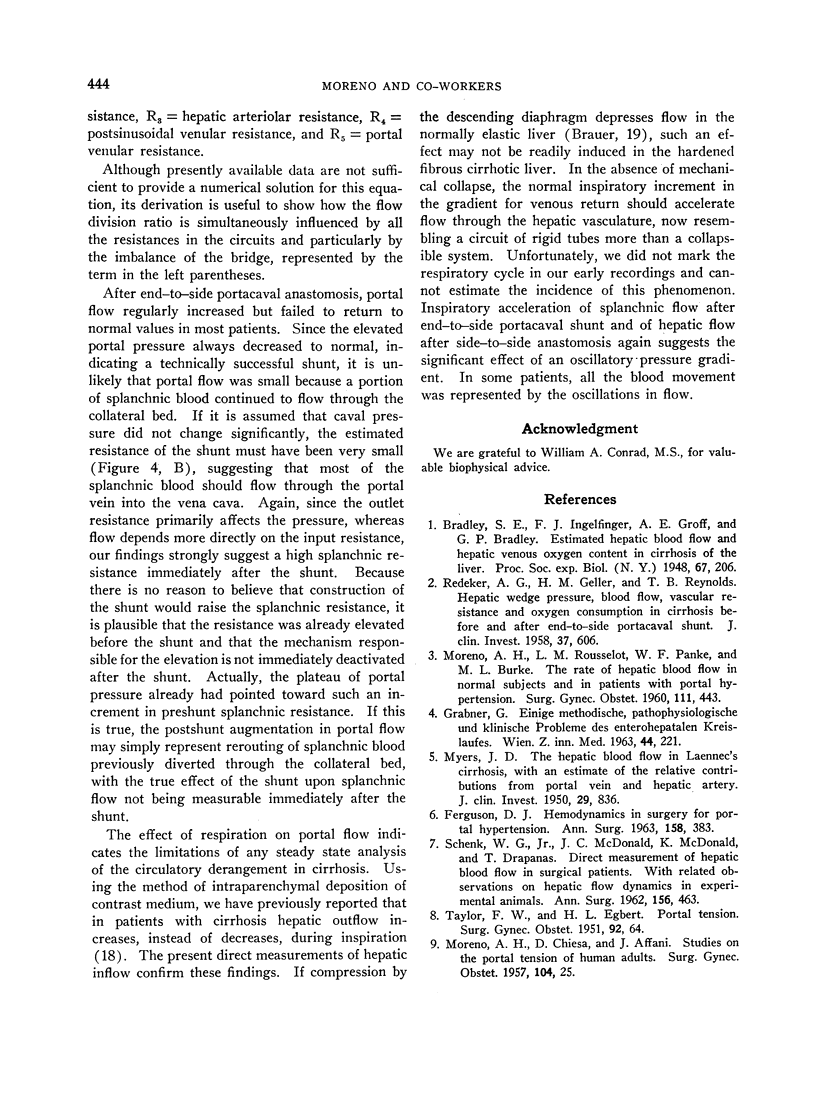
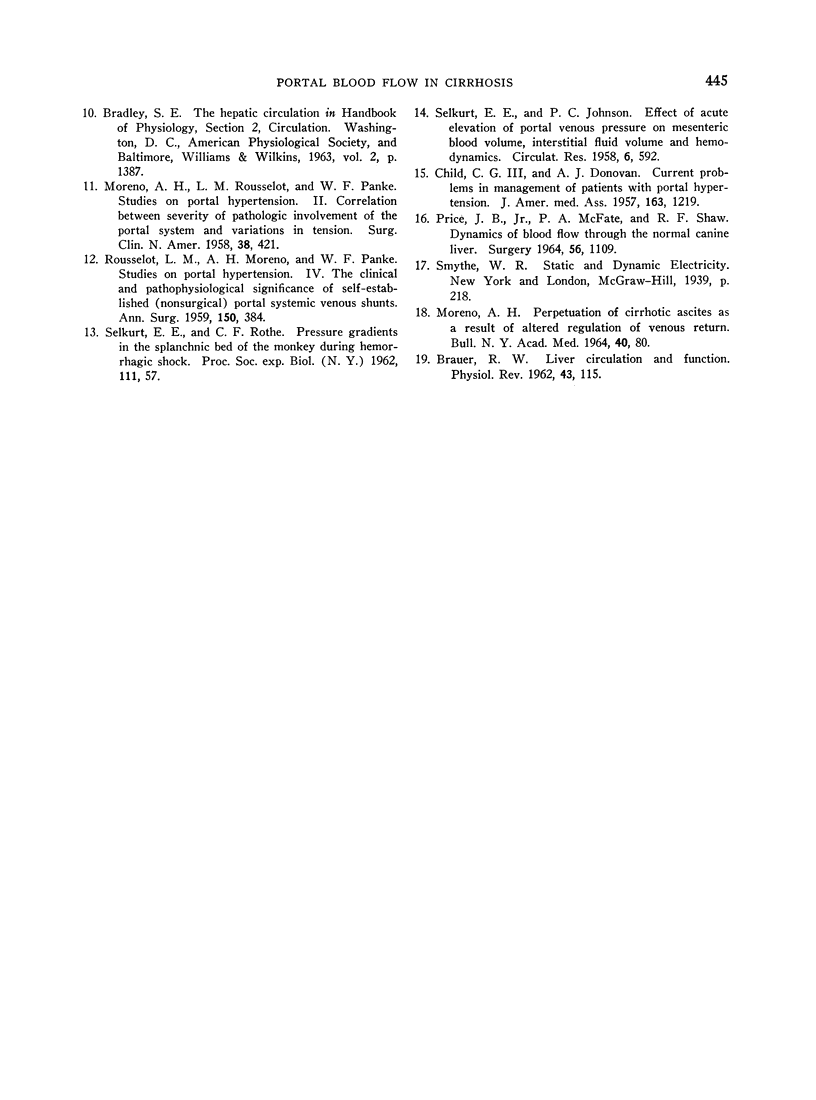
Images in this article
Selected References
These references are in PubMed. This may not be the complete list of references from this article.
- BRAUER R. W. Liver circulation and function. Physiol Rev. 1963 Jan;43:115–213. doi: 10.1152/physrev.1963.43.1.115. [DOI] [PubMed] [Google Scholar]
- CHILD C. G., 3rd, DONOVAN A. J. Current problems in management of patients with portal hypertension. J Am Med Assoc. 1957 Apr 6;163(14):1219–1229. doi: 10.1001/jama.1957.02970490017005. [DOI] [PubMed] [Google Scholar]
- FERGUSON D. J. HEMODYNAMICS IN SURGERY FOR PORTAL HYPERTENSION. Ann Surg. 1963 Sep;158:383–386. doi: 10.1097/00000658-196309000-00007. [DOI] [PMC free article] [PubMed] [Google Scholar]
- GRABNER G. EINIGE METHODISCHE, PATHOPHYSIOLOGISCHE UND KLINISCHE PROBLEME DES ENTEROHEPATALEN KREISLAUFES. Wien Z Inn Med. 1963 May-Jun;44:221–305. [PubMed] [Google Scholar]
- MORENO A. H., CHIESA D., AFFANI J. Studies on the portal tension of human adults. Surg Gynecol Obstet. 1957 Jan;104(1):25–35. [PubMed] [Google Scholar]
- MORENO A. H., ROUSSELOT L. M., PANKE W. F., BURKE M. L. The rate of hepatic blood flow in normal subjects and in patients with portal hypertension. Surg Gynecol Obstet. 1960 Oct;111:443–450. [PubMed] [Google Scholar]
- MORENO A. H., ROUSSELOT L. M., PANKE W. F. Studies on portal hypertension. II. Correlation between severity of pathologic involvement of the portal system and variations in tension. Surg Clin North Am. 1958 Apr;38(2):421–445. doi: 10.1016/s0039-6109(16)35437-8. [DOI] [PubMed] [Google Scholar]
- MYERS J. D. The hepatic blood flow in Laennec's cirrhosis, with an estimate of the relative contributions from portal vein and hepatic artery. J Clin Invest. 1950 Jun;29(6):836–837. [PubMed] [Google Scholar]
- PRICE J. B., Jr, MCFATE P. A., SHAW R. F. DYNAMICS OF BLOOD FLOW THROUGH THE NORMAL CANINE LIVER. Surgery. 1964 Dec;56:1109–1120. [PubMed] [Google Scholar]
- REDEKER A. G., GELLER H. M., REYNOLDS T. B. Hepatic wedge pressure, blood flow, vascular resistance and oxygen consumption in cirrhosis before and after end-to-side portacaval shunt. J Clin Invest. 1958 Apr;37(4):606–618. doi: 10.1172/JCI103643. [DOI] [PMC free article] [PubMed] [Google Scholar]
- ROUSSELOT L. M., MORENO A. H., PANKE W. F. Studies on portal hypertension. IV. The clinical and physiopathologic significance of self-established (nonsurgical) portal systemic venous shunts. Ann Surg. 1959 Sep;150:384–412. doi: 10.1097/00000658-195909000-00006. [DOI] [PMC free article] [PubMed] [Google Scholar]
- SCHENK W. G., Jr, McDONALD J. C., McDONALD K., DRAPANAS T. Direct measurement of hepatic blood flow in surgical patients: with related observations on hepatic flow dynamics in experimental animals. Ann Surg. 1962 Sep;156:463–471. doi: 10.1097/00000658-196209000-00013. [DOI] [PMC free article] [PubMed] [Google Scholar]
- SELKURT E. E., JOHNSON P. C. Effect of acute elevation of portal venous pressure on mesenteric blood volume, interstitial fluid volume and hemodynamics. Circ Res. 1958 Sep;6(5):592–599. doi: 10.1161/01.res.6.5.592. [DOI] [PubMed] [Google Scholar]
- TAYLOR F. W., EGBERT H. L. Portal tension. Surg Gynecol Obstet. 1951 Jan;92(1):64–68. [PubMed] [Google Scholar]





